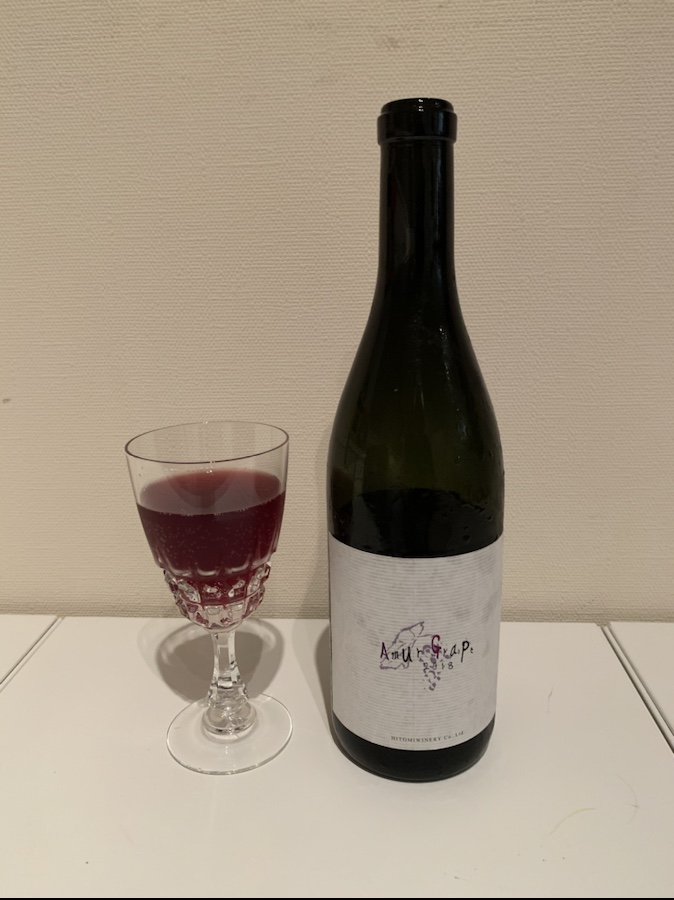
Attribution: Kmusser; https://commons.wikimedia.org/wiki/File:Amurrivermap.png
The Amur River forms part of the vast border that Russia shares with China. It, along with the Amur Valley that straddles that river, lends its name to a species of grape known as Vitis amurensis. The grape is actually a survivor from pre-glacial days. As might be expected, it does very well in cold climates and is high in acidity. This species of grape, along with a related one, Vitis coignetiae, produces a wine that is known as “Yamabudo wine” in Japan and “Meoru” in Korea. We have written about this before, both on the blog and in our book, but we are not repeating ourselves here.

We recently sat down with a bottle of Amur Grape 2018, which is significantly different from typical Yamabudo wine. This trilateral rendition—and you thought we were going to critique the Trilateral Commission, didn’t you?—is the output of a winery based in Shiga Prefecture, Japan, called Hitomi Winery, which sources its grapes from Iwate Prefecture to produce what they claim is a Chosen (i.e., Korean) Yamabudo wine.
As might be expected by those familiar with the varietal, the wine is low in alcohol and high in acidity. This one is especially high in acidity, which leaves the mouth watering and the drinker with an overall impression of freshness. However, if your preferences in vino run along the lines of the opulent, intense, full-bodied, knock-your-socks-off level of alcohol that is characteristic of some of the reds from Mediterranean and Mediterranean-like climes, you have pulled out the wrong cork.
Aside from its trilateral aspect, it is different in other ways as well. Yamabudo wine is intensely colored, but this one is medium pink. Yamabudo is often described as “austere,” owing to its formidable tannins, but here the tannins are somewhat subdued. Both of these attributes are due to the winemaker’s decision to limit skin contact.
The bouquet is difficult to describe. At first one of us picked up on a faint wild strawberry aroma, but the second whiff revealed nothing of the kind. The consensus was that the aroma was of some finished wood product. It should be noted that the label makes no mention of wood-aging. The overall impression on the palate is freshness, which is enhanced by the CO2: it is slightly sparkling.
The wine has a hazy appearance, which does not indicate faulty winemaking. This is an unfiltered, unclarified wine, which is the way at least one of us likes his wines.
We all agreed that the wine shares some similarities with at least one manifestation of that refreshing Belgian beer known as lambic.
The acidity may be too much for some people to handle, but we believe that this wine is well worth the purchase price.
Recommendation level (out of five stars):
⭐️⭐️⭐️⭐️
We have written a book. For more information on Japanese beverages, please check it out. You can get it at fine offline and online booksellers in Japan, including Amazon.
#drinkingjapan #drinkjapan #japanesewine #hitomiwinery #chosenyamabudo #yamabudo #amur